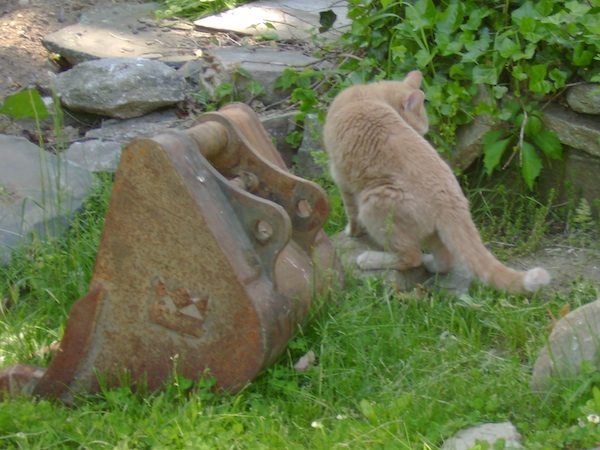This is a temporary duplicate of memorablemilford.com while we upgrade that site to a more mobile friendly version.
A search function and contact information are planned to assist anyone with information or corrections. Until then, I will post Milford history in the Facebook pages You know you live in Milford CT if.... and Milford, Ct. Then & Now
Notable residents of Milford
- Robert Treat Colonial military officer, Governor of the Colony of Connecticut
- Jonathan Law Colonial era judge, Governor of the Colony of Connecticut
- Peter Pond 1st explorer of the Athabasca region of North America
- Captain Stephen Stow Colonial resident that cared for smallpox infected soldiers left by British on the beach
- Abigail Merwin alerted the local militia of a raid by British forces arriving
- Joseph Plumb Martin Revolutionary War Soldier
- Charles H. Pond New Haven County Court Judge, New Haven sheriff, Lieutenant Governor & 37th Governor of Connecticut
- Frank J. Sprague Inventor who helped develop major electric devices
- Simon Lake Inventor and naval engineer of submarines
- Milford visitors people that passed through the town
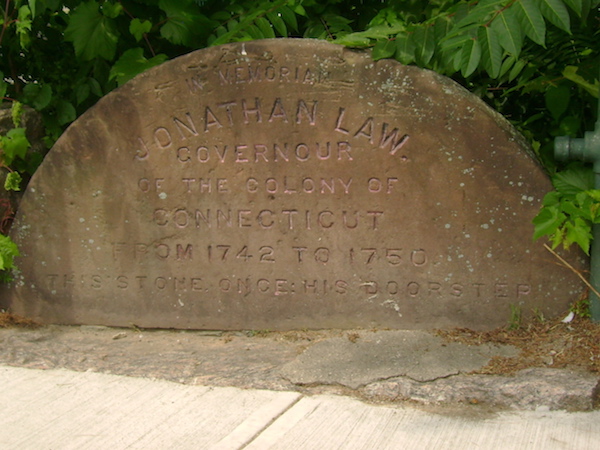
millstone that was Jonathan Law's doorstep
Jonathan Law
Colonial era judge, Governor of the Colony of Connecticut 1741-1750. Law was the 27th Governor of the Colony of Connecticut, serving in that office from 1741 until 1750. His term followed that of Joseph Talcott, governor from 1724 until 1741, and preceded that of Roger Wolcott, governor from 1750 until 1754.
Law was born in Milford in what was then Connecticut Colony to Jonathan and Sarah (Clark) Law. He studied law at Harvard College, graduating in 1695. He was known as a talented, amiable, even-tempered person who promoted religion, education, and mutual cooperation.
Jonathan Law High School in Milford Connecticut was named in his honor. The Jonathan Law stone in the Memorial tower bridge is the front step of his home.
Robert Treat
Treat was born in England. He settled in Milford, Connecticut at age 15 in 1639 later becoming one of the leaders of the New Haven Colony, serving in the General Court as the assembly was known.
Treat led a group to New Jersey in 1666. Treat wanted the new community to be named Milford, New Jersey. They agreed upon the name New Ark, which was shortened to Newark.
Treat headed the colony's militia for several years, principally against the Narragansett Indians. This included participating in King Philip's War in 1676. He served on the Governor's Council continuously from 1676 to 1708. He was first elected Governor in 1683.
Treat is credited with having a role in concealing the state's Charter in the Charter Oak as governor.
His great-grandson, Robert Treat Paine, signed the Declaration of Independence.
Peter Pond
Peter Pond, born in Milford on January 18, 1740, is more well known in the Canadian region he first explored in the 1780s & as founding the North West Company than his birthplace. The Hudson's Bay Company ultimately acquired Pond’s fur trading company. Pond founded several cities in Alberta, Canada including Fort Chipewyan and Fort McMurray.
After serving in the French and Indian War, Pond head north along the Mississippi River to open between 1776–1778 a fur post about 500 miles north of Montana. Pond explored waterways and drew maps of Hudson Bay region including the source of the thick tar commonly referred to as the Canadian tar sands. Despite Pond’s maps of the territory, there are few accounts of Pond’s descriptions of the area explored due to there are no diary entries after 1775. Peter Pond was the first to explore and map vast stretches of North American and blazed trails that were used for 100 years until trains could reach the area.
Pond being a large man with a temper resulted in numerous stories of shooting men which led to his removal from his post in 1788. He taught his successor, Alexander Mackenzie, about the land and which local Indian tribes to trade with or to avoid. Mackenzie continued Pond’s explorations becoming the first to see the Pacific Ocean paving the way for Lewis and Clark. Pond returned to Milford, Connecticut, where he died in poverty and was buried in an unmarked grave on March 6, 1807.
For more about Peter Pond please visit the Peter Pond Society.
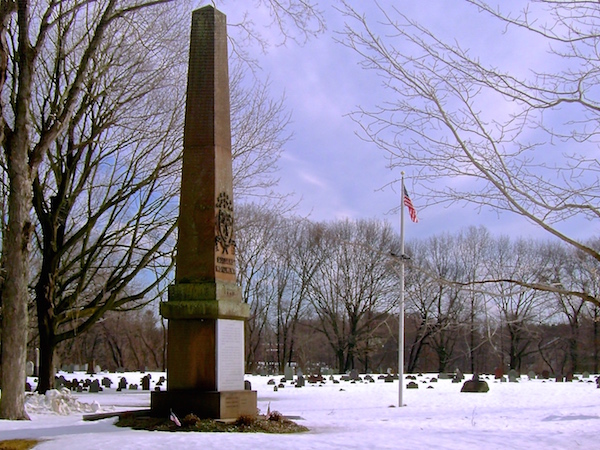
monument to Captain Stephen Stow in Milford Cemetery
Captain Stephen Stow
Captain Stephen Stow bravely and unselfishly risked everything to help save 200 smallpox infected soldiers. He said goodbye to his wife to care along with and Captain Isaac Miles for the prisoners left ashore on January 1 1777 by the British. They cared the men at a Pest House on what was once called Pox Lane but is now East Rutland Road. His home was moved from Fort Trumbull to the Milford Historical Society’s property on High Street. Erected over the site of 46 graves in 1853 is a 35 foot tall obelisk, consisting of only 2 stones, in Milford Cemetery honoring Stow’s act of serving a higher cause and not being merely concerned with his own interests.
Abigail Merwin
Abigail Merwin was a Colonial-era wife and mother who alerted the local militia of a raid by British forces arriving from the warship HMS Swan on August 25, 1777. In the summer of 1777, Merwin saw rowboats bearing British troops from the warship HMS Swan, which was docked in Milford Harbor. Merwin gathered her 18-month-old child into a horse-drawn wagon and sped into Milford, where she banged a wooden spoon against a metal pot to alert the townspeople of the coming invaders. Her actions enabled the local militia to gather their weapons and successfully repel the invaders, while the local farmers were able to herd their cattle to a safety in an area now known as Calf Pen Meadow.
Joseph Plumb Martin
A Revolutionary War Soldier who published an account of his experiences as a soldier in the Continental Army in 1830. Martin participated in such notable engagements as the Battle of Brooklyn, the Battle of White Plains, the siege on Fort Mifflin and the Battle of Monmouth. He encamped at Valley Forge, and was present during the Siege of Yorktown, attaining the rank of Corporal. Martin's narrative of the war has been frequently cited by scholars as an excellent primary source for the American Revolution. His narrative is considered one of the major primary sources for historians, researchers and re enactors of the American Revolution.
Charles H. Pond
Judge of the New Haven County Court, sheriff of New Haven, Lieutenant Governor & 37th Governor of Connecticut after the resignation of Governor Thomas Hart Seymour. Pond graduated from Yale University in 1802. He was a judge of the New Haven County Court from 1816-87, sheriff of New Haven from 1820-34, and then again a County Court judge from 1836-37. He did not seek re-election. His great grandson of the same name was born October 11 1833 and built a granite mansion Island View on High Street in 1864 which was renamed after his death as Laurelton Hall..
Frank J. Sprague
Milford resident Frank Sprague was one of Connecticut’s many inventors and worked for Thomas Edison. Sprague helped create numerous improvements for the electric motor, trolleys, railways and elevators. Sprague was part of a long line of people associated with Milford exploring new ideas and lands.
Sprague started the practice of using math to solve electro-mechanical problems quicker than the trial-and-error experimentation then performed at Edison's Menlo Park Laboratory. Sprague's inventions included overhead wires for streetcars for the motors and the dead man's brake to stop a trolley car if the conductor lost control of it. Sprague's developments made feasible the construction of tall commercial buildings and skyscrapers.
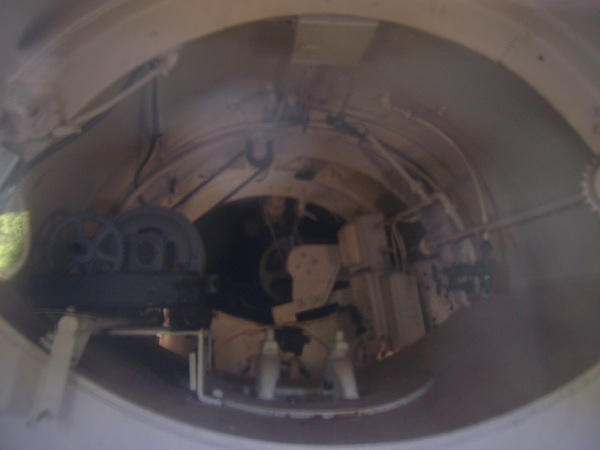
inside of Simon Lake's submarine
Simon Lake
Inventor and naval engineer of submarines, Simon Lake advanced David Bushnell’s submarine groundwork from the late 1700's with modern designs 100 years ago. Lake was born on September 4 1866 in Pleasantville, New Jersey holding numerous naval patents that advanced submarine design building.
He built his first submarine, the Argonaut Junior, in 1894. The Protector in 1901 was the first submarine with forward mounted diving planes and a flat keel allowing it to maintain its depth. Finances hampered Lake's ability to build submarines in the United States leading him to design subs for Austria-Hungary and selling the Protector to Imperial Russia in 1904.
He returned to live in Milford, Connecticut in 1907. His Lake Torpedo Boat Company in Bridgeport, Connecticut set a depth record with Lake's first U.S. Navy submarine, in November 1912. Lake switched to designing maritime salvage systems when international treaties limited the size of navies in 1922. He obtained salvage permission for the Lusitania and a Revolutionary War era British frigate with his submarine, the Explorer. During World War II he was a United States Navy submarine and salvage advisor.
Lake insisted on repaying back his creditors after declaring bankruptcy dying on June 5 1945 with his house on the green now operated as a funeral parlor. His last small salvage sub, The Explorer, is on display by the harbor. US Navy submarine tenders between 1964 and 1999 bore his name. A Milford grammar school named in his honor closed in June 2010.
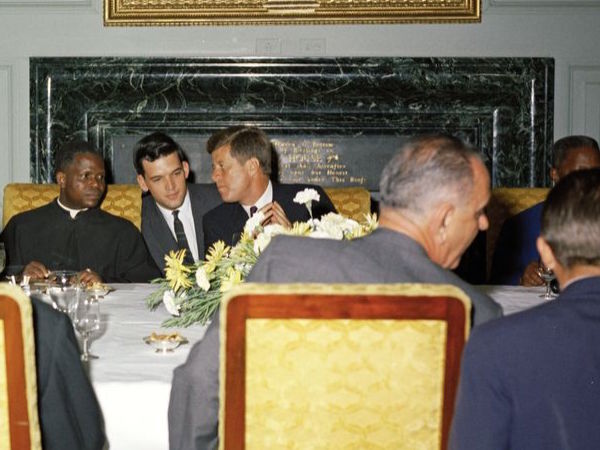
President Kennedy in front of White House fireplace of Milford Marble
public domain photo taken on June 21, 1961
Presidential and Pirate visitors to Milford
Many places can claim that George Washington slept here but Milford can boast of several Presidential visits plus many Presidents have slept near a piece of Milford.
George Washington asked for a silver spoon for his milk and bread breakfast at the Clark Tavern in November 1789. This was because the more common utensils were made of pewter which contains lead. He paid 7 shillings for the spoon the innkeeper obtained from the nearby church. Jefferson's Vice President Aaron Burr stayed at the same tavern in Milford. He had been on his way to Philadelphia when Samuel Higby, the church tithingmen required him to stop and wait due to a law prohibiting Sunday traveling.
Milford was still a colony of England when doctor and writer Alexander Hamilton of Edinburgh, Scotland had breakfast at Gibb’s on August 29, 1744. Local politicians read the news about ships captured by privateers (Pirates commissioned by England to board ships from other countries). He is not to be confused with George Washington’s Secretary Of The Treasury of the same name that fatally shot Aaron Burr in a duel.
A rumor is that Captain Kidd buried some of his treasure on Charles Island during his last voyage to Milford in June 1699.
President Bill Clinton rented a Milford shoreline house at 889 East Broadway from 1970 to 1971 while a Yale student in nearby New Haven. Like most beach residences, it was not insulated from the cold of the winter months but ideal for outdoor activities by young scholars. He played touch football on the beach behind the house with his drinking buddy roommates along an area referred to as "Keg Row" and frequented the Pilgrim Barbecue restaurant/bar. Bill was known for his good humor getting toasted almond ice cream every day from a truck. He remarked to another ice cream guy during a return visit while he was Governor of Arkansas followed by Secret Service agents in the 1980s that he was going to be President. Presidential candidate Hillary Rodham was a constant visitor to the Milford rental from when she met Bill in mid-April 1971. They first got to know each other the same week that Doris Gagnon's house was demolished about a 1/2 mile away to make room for what eventually became Silver Sands State Park. After leaving in late June for the Yale summer recess, the couple moved to Berkley, California.
The White House's East Room fireplace was one of four with a variety of marble representing different states with Connecticut sending stone from Milford. It is believed that in 1902 these had replaced the 1873 white and gold wood mantels as well as the earlier 1829 black Italian marble with 2 foot deep surrounds. The mantelpieces were painted to look like white marble shortly after this June 20 1961 President Kennedy photo was taken.
